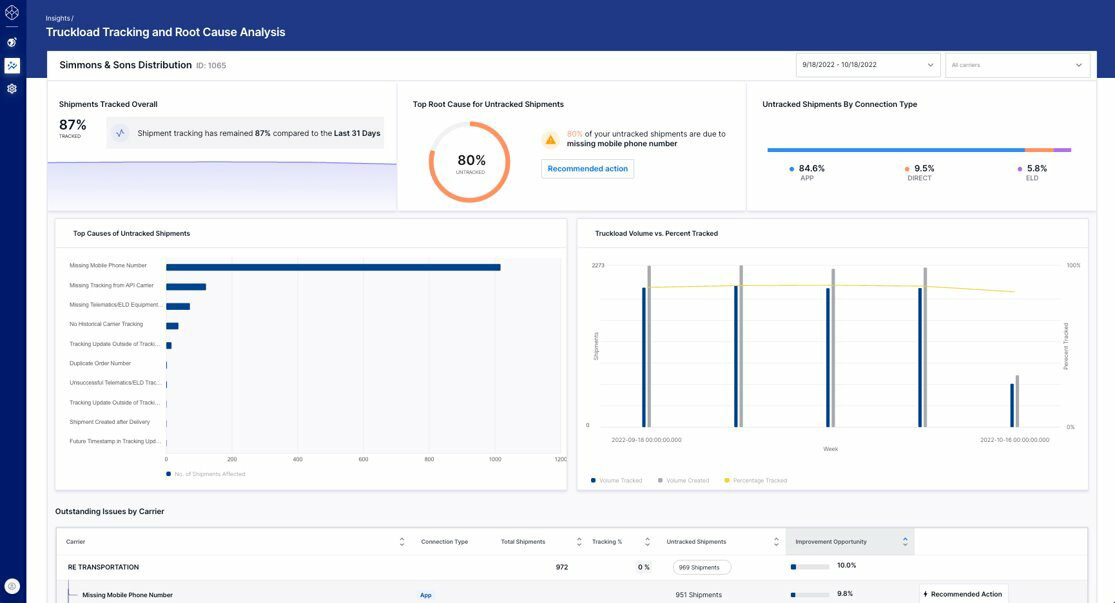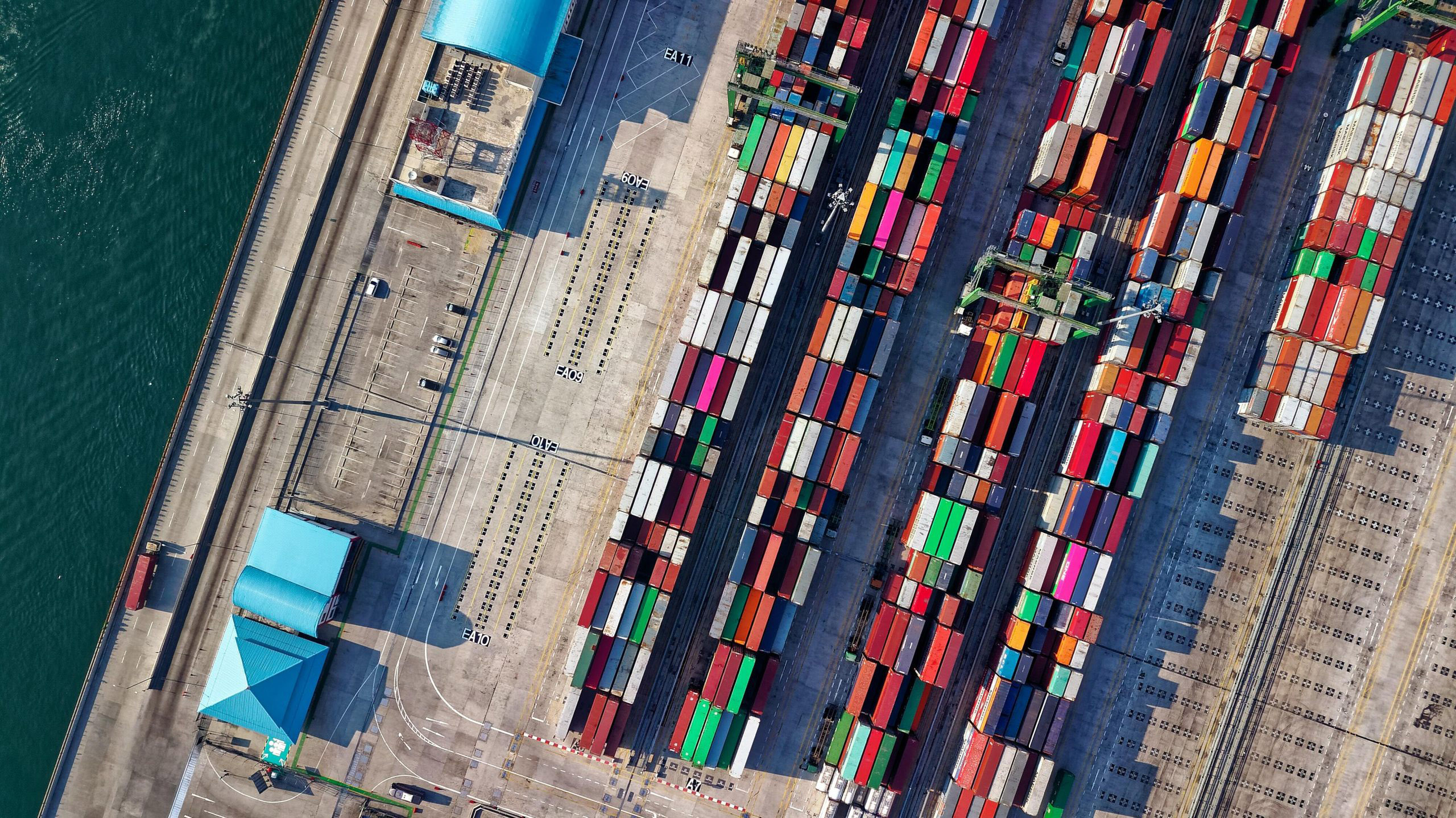This is the third and final installment of our series based on our webinar, From Buzzword to Reality: 7 Ways to Actually Increase Supply Chain Agility. In part one we covered three ways to reduce costs and improve efficiency through smarter, more proactive planning. In part two, we explored two critical ways to eliminate excess spend and increase cash flow through better management of in-transit inventory. In this final installment, we look at two powerful ways to increase team productivity and efficiency through automation.
This entire series, and the webinar that started it all, was inspired by our desire to go beyond buzzwords and provide logistics professionals with some practical and proven strategies for overcoming some of their biggest challenges. We felt that the word “agility” was being thrown around too much as some kind of magic solution, without anyone explaining exactly what it means or how to actually achieve it.
In our webinar my project44 colleague, solution engineer Elizabeth Labuzienski, and I get into the nuts and bolts of improving agility and share real-world customer stories about success with our Movement platform. Overall, we cover seven key ways project44 can help supply chain professionals reduce delays, cut costs, and improve overall efficiency.
1. Gain efficiency by reducing WISMO via proactive notifications
The Challenge:
You never want a customer to find out about a logistics problem before you do, but it happens all the time. The result is a constant flood of where-is-my-order (WISMO) requests. From there, the challenge becomes finding an efficient way to address all these requests in a timely manner that reflects your commitment to the best customer service. The problem? Delivering an experience that exceeds customer expectations takes a lot of time and resources. Usually, issue resolution requires a lot of back-and-forth manual communication, and that’s when teams get overburdened and things inevitably fall through the cracks.
The Risk Factors:
On the operations side, managing WISMO requests is a time-intensive and costly undertaking. You may have the overhead of staff whose full-time job is customer communications, or you may have individuals with other full-time roles trying to manage these calls on the side. Either way, it’s a very real expense in terms of salary and hours spent.
As an example, if you have 10,000 shipments a month, and 10% of them have an exception, and each exception takes 30 minutes of staff time to resolve, that’s 30,000 minutes or 500 hours each month.
How Movement from project44 Can Help:
What you need to overcome this challenge is a way to eliminate unnecessary work and free your team up for work that is more impactful to your business. But, you need to do this without jeopardizing customer satisfaction. Ultimately, that means you need real-time visibility into exceptions paired with automated alerts that kick into action before the customer is even aware that there’s an issue.

With the Movement Platform, customers get notifications with live links that show them exactly where their shipment is, the predictive ETA, and where the item is located via a map view.
Benefits:
Allow your customer to self-serve, which greatly reduces the number of WISMO requests while simultaneously delivering a more positive end-to-end experience for the customer.
Achieve greater internal efficiency and agility with automation-driven process improvements.
Reallocate hours to revenue-generating tasks.
Real-world Use Case – Reallocating Time from WISMO Administration to Revenue-generating Activities:
When you have a more efficient, automated way to mitigate and handle WISMO requests, you suddenly have more time on your hands. One Movement customer reallocated the hours that had previously been spent chasing down orders to more in-depth customer service/sales collaboration. As a result, the company was able to drive more upsells, improve customer satisfaction, and expand sales across the full range of products and services. Each of these outcomes made a positive difference. Collectively, they had a real impact on the company’s bottom line.
2. Digitize Your Supply Chain to Better Track and Reduce Emissions
Digitizing your supply chain results in team and process efficiency in dozens of different ways. In fact, we could easily write an entire blog series on this topic alone (and we will).
Digitization helps improve shipment tracking, reduce manual labor, cut down on mountains of paperwork, and minimize human error. It can also help companies better measure, track, and reduce supply chain emissions. And since sustainability is of particular importance for many businesses and consumers alike, that’s what we’ll focus on here.
The Challenge:
Regulatory requirements, customer demands, and environmental realities have put immense pressure on shippers and LSPs to operate more sustainability. In many instances these goals are set at the board level, meaning teams are spun up and priorities are shifted to achieve results. Companies tend to focus on Scope 1 emissions – direct emissions from company-owned or -controlled resources – because Scope 1 emissions are easier to measure and improve upon. But guess what? Scope 3 emissions – emissions that occur in the value chain of a company’s operations – account for 90% of a company’s total emissions. That’s right, 90% of emissions come from assets that organizations don’t measure. And according to data from McKinsey, 60% of a company’s emissions are supply-chain related.
The Risk Factors:
The problem? You can’t track what you don’t measure. Tracking your supply chain’s Scope 3 emissions to meet board-level sustainability goals is full of manual effort to 1) ascertain and validate emissions from different shipments and orders, and 2) conduct data analysis and centralize and report on these metrics.
How Movement from project44 Can Help:

The Movement platform solves this issue simply and easily. Our Emissions Visibility dashboard gives customers visibility into their historical CO2 carbon footprint using project44 shipment data by country of import/export, lane, and carrier – all with shipment level granularity.
Benefits:
Accessible and accurate emissions data across your transportation network.
project44’s robust data set – which receives over 10 billion supply chain data points per month – combined with customer shipment data is run through GLEC-accredited emissions calculators to power visibility tools required to measure and reduce emissions.
Visibility and automated reporting of your global transportation emissions.
project44 provides easy-to-understand dashboards that give you visibility into historical, current, and forecasted carbon emissions by location, lane, and carrier down to the shipment level.
Sustainability is good for the planet, but it’s also good for your bottom line.
With Movement, you can optimize transportation routes by making decisions based not only on cost and performance, but also emissions trade offs for each carrier, route, or lane.
You’ll also improve personal efficiency by reducing hundreds of hours of manual effort and decrease the effort required to meet regulatory compliance through better reporting on carbon tax mitigation.
Finally, you’ll improve your customer experience with higher NPS and CSAT scores by aligning around a focus on sustainability.

Real-world Use Case – Reducing Administration Time by 85%:
A $37B global manufacturer listed on the Dow Jones Sustainability World Index (SPDJI) was having trouble measuring and improving upon their transportation emissions. They turned to project44 to track and reduce CO2 emissions for ocean shipments for the following reasons:
Accurate and dynamic BI dashboards and reports to display current ocean carbon footprint and integrate actionable decision making
Ability to incorporate ocean booking / tendering process to evaluate estimated emissions for all carriers, by lane
Real-time and historic information based on real vessel speeds, distances, and engine power/vessel characteristics
Ability to determine the best lane / route / carrier with lowest emissions at the operational planning level
Certified (GLEC) and accredited (Smart Freight Centre)
After their project44 implementation, the company saw the following the results:
Able to accurately measure carbon footprint and emissions from ocean transport (current and historic) against actual bookings
Transport planners able to compare carrier carbon emissions by lane and / or carrier to assist in daily operations
Procurement able to incorporate all carriers’ emissions by lane and / or service into carrier selection criteria for booking and tendering
Automation is a Powerful Tool for Increasing Day-to-day Productivity and Efficiency as Well as Overall Supply Chain Agility.
Today’s supply chain logistics are extremely complex and changeable. In addition to the internal processes and regular operational challenges, there are many influencing factors that are outside your control. To improve your supply chain agility, you need everyone on your team focusing on the most important tasks. Automation can help your team do more with less and maximize their own efforts by taking a lot of otherwise time-consuming and arduous tasks off their plates. Your team gets their time back, and that can be a real game changer.
If you’d like to hear more about these automation-related strategies as well as the other strategies we covered in the previous two installments of this series, you can tune in to view the on-demand webinar replay.



